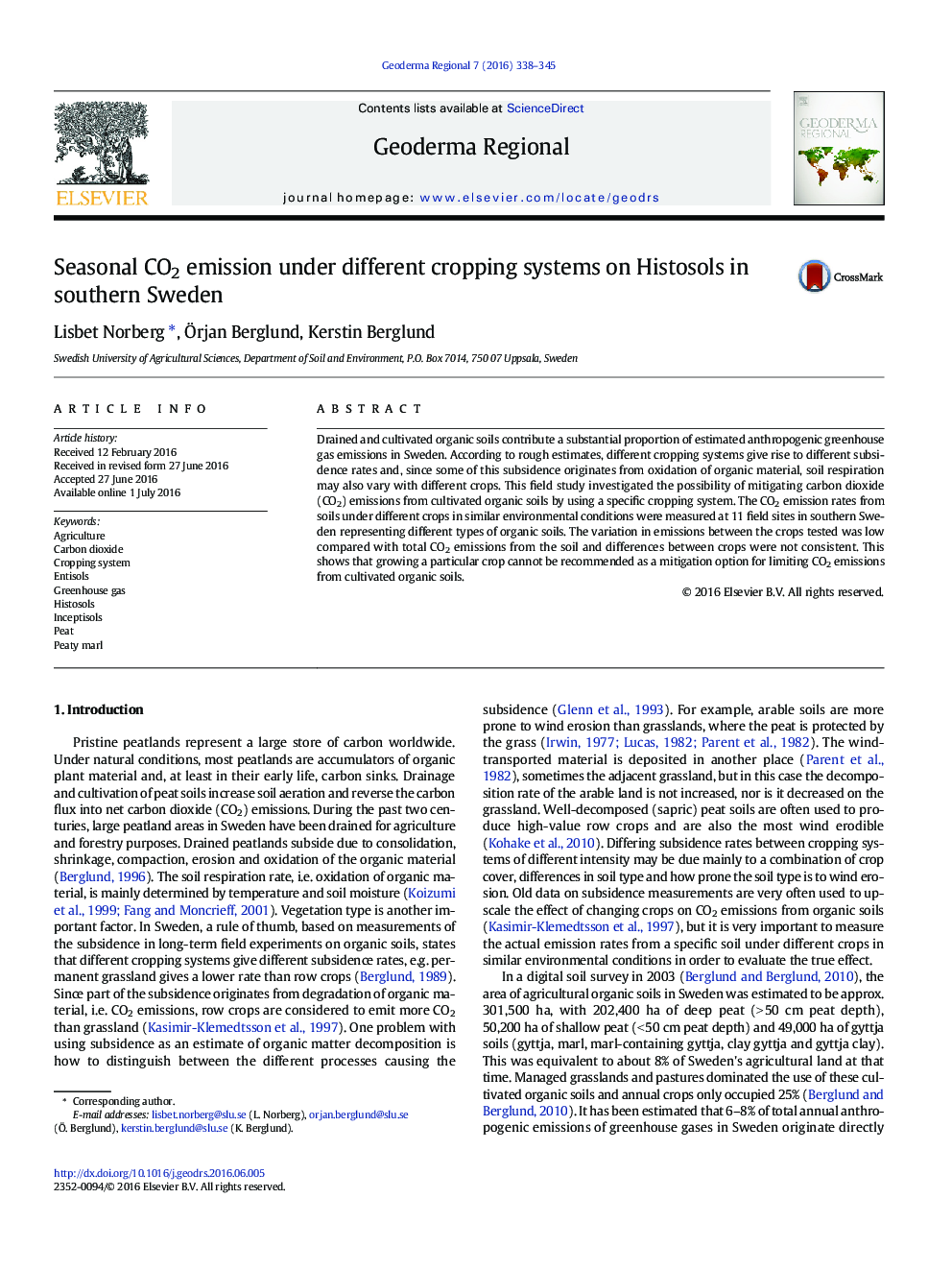| Article ID | Journal | Published Year | Pages | File Type |
|---|---|---|---|---|
| 4480750 | Geoderma Regional | 2016 | 8 Pages |
•Differences in CO2 emissions between crops on organic soils were not consistent.•Compared to total soil CO2 emissions the variation between the crops were low.•A particular crop cannot be recommended as a mitigation option for CO2 emissions.
Drained and cultivated organic soils contribute a substantial proportion of estimated anthropogenic greenhouse gas emissions in Sweden. According to rough estimates, different cropping systems give rise to different subsidence rates and, since some of this subsidence originates from oxidation of organic material, soil respiration may also vary with different crops. This field study investigated the possibility of mitigating carbon dioxide (CO2) emissions from cultivated organic soils by using a specific cropping system. The CO2 emission rates from soils under different crops in similar environmental conditions were measured at 11 field sites in southern Sweden representing different types of organic soils. The variation in emissions between the crops tested was low compared with total CO2 emissions from the soil and differences between crops were not consistent. This shows that growing a particular crop cannot be recommended as a mitigation option for limiting CO2 emissions from cultivated organic soils.
